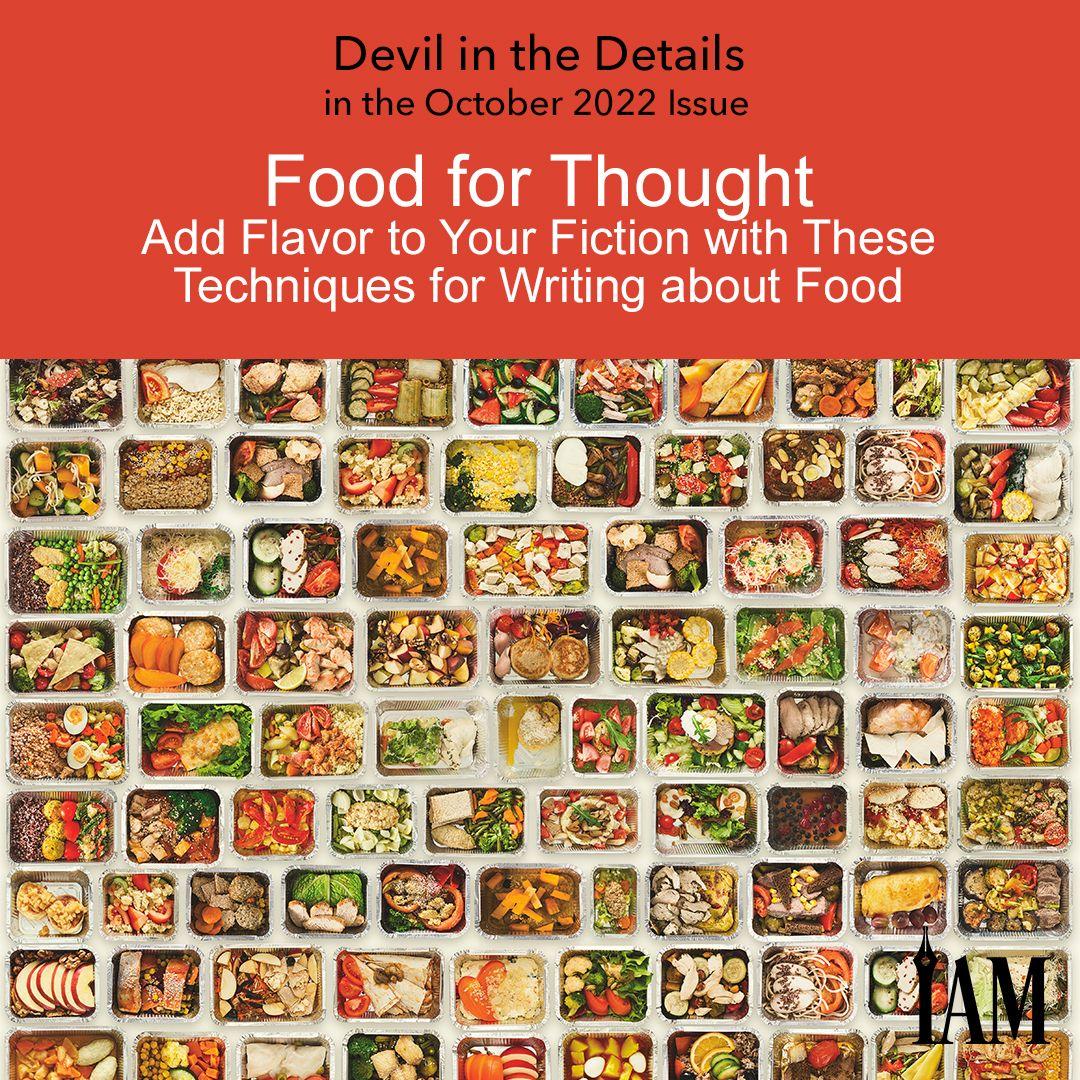Add Flavor to Your Fiction with These Techniques for Writing about Food
Jenn Mitchell
Adam and Eve had their fateful apple. Tales of the Old West had chuck wagons. The Jetsons had food pellets. No matter what genre you’re writing in, if your story contains living beings and plays out over more than a day or two, you’re going to have to feed and water your characters.
Tales of epic journeys can be a lot of fun to write, but they also need to ring true, or your readers will devour you in their reviews. Your job as a writer is to get them to suspend their disbelief, not to insult their intelligence by asking them to believe that a quart of milk would still be drinkable after a week in the backpack of a character stumbling their way across the desert. Fortunately, with a little research and pre-planning, you can serve up a delicious tale that leaves your readers hungry for more.
Feast and Famine
Life’s basic necessities like food and shelter aren’t too difficult to deal with when your characters have the luxury of a fully stocked and functional home base, but things can get a little dicey when you toss in a road trip or a cataclysmic event like an apocalypse or an alien invasion.
Even if your story takes place in a modern day setting, it’s important to pay attention to how often your characters eat and what they’re eating. It may also be worth noting that the need to sustain your characters doesn’t apply only to human characters—it also applies to pets and magical creatures. A good rule of thumb here is to treat all your character’s needs with the same level of urgency and caution.
The average person needs approximately 1,200 calories per day to maintain long-term health, but that number increases as your character’s level of physical activity increases. So too does the need for water. Adult bodies are approximately 60 percent water, while children’s bodies are closer to 75 percent water. Keeping your characters adequately hydrated is essential to their health and survival. The FEMA website offers a great resource for determining how much your characters need to eat and drink, as well as information on how they should store their stockpile:
Research is especially important when working in historical settings. Be sure to verify that the foods your characters are eating are actually possible for the time period. The Food Timeline at https://foodtimeline.org can be a great resource for this—the database offers information on the evolution of food throughout history, including locations, time periods, and archived recipes for the dishes.
Laws of Science
Beyond knowing what your characters eat, one of the first things you need to consider when dealing with food on a long journey is how the physical world affects your ability to acquire and prepare it. Let’s say you’re penning the next great space opera, and your characters have just landed on some distant planet. Before they rush out to gather wood so they can roast space shrimp to celebrate, consider whether those materials would be available—or even whether the atmosphere will allow for a fire. Pay the same level of attention to the animals your characters hunt, trap, or catch, as well as the plants they consume. If the animals or plants seem out of place given your character’s physical location or climate, your readers will notice.
Food Safety
For those in the commercial food industry, the Hazard Analysis and Critical Control Points (HACCP) principles are “an internationally recognized method of identifying and managing food safety related risk,” according to the Safe Food Alliance. Although you probably don’t need to be so thorough as an author, you really should be familiar with food safety basics—otherwise you might end up killing your characters long before they reach their destination.
Food sustains us, but it can also do us dirty if we aren’t careful with how we store and handle it. In the culinary world, the temperature range referred to as the danger zone spans 40 degrees Fahrenheit to 140 degrees Fahrenheit. In this range, bacteria can grow at a rapid rate and cause a host of ugly, painful foodborne illnesses.
Unless your story takes place in Siberia or the scorching-hot surface of Venus, it’s likely that your characters will spend most of their journey or their day-to-day life somewhere within the danger zone temperature range, and it will impact the way they deal with food. For stories that involve travel, it might be best to avoid dairy and uncooked meats, as these spoil easily and quickly. Grain-based, packaged, or processed foods that don’t require cooking or cold storage are usually a safe bet for keeping your characters fed when they’re on the move.
Knowing what kinds of foods are available and how to store them safely is great when it comes to protecting your characters; however, that’s not to say that you should always play it safe. Sometimes a story calls for characters to embrace the dark side, and offering up a flask of contaminated water or applying a savory spice rub to cover up the scent of spoiled meat just might be the tastiest way to slow down or take out an enemy.
Jenn Mitchell






